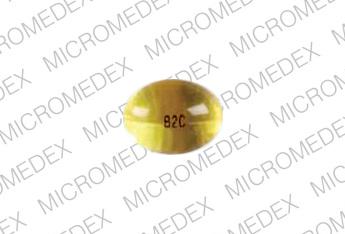Lanoxicaps Side Effects
Generic name: digoxin
Medically reviewed by Drugs.com. Last updated on Nov 19, 2023.
Note: This document provides detailed information about Lanoxicaps Side Effects associated with digoxin. Some dosage forms listed on this page may not apply specifically to the brand name Lanoxicaps.
Applies to digoxin: oral solution, oral tablet.
Precautions
It is very important that your doctor check your progress closely while you are using this medicine to see if it is working properly and to allow for a change in the dose. Blood tests may be needed to check for any unwanted effects.
Do not Stop taking digoxin (the active ingredient contained in Lanoxicaps) without first checking with your doctor. Stopping suddenly may cause a serious change in heart function.
Watch for signs and symptoms of overdose while you are taking this medicine. Follow your doctor's directions carefully. The amount of this medicine needed to help most people is very close to the amount that could cause serious problems from overdose. Some early warning signs of overdose are confusion, loss of appetite, nausea, vomiting, diarrhea, or vision problems. Other signs of overdose are changes in the rate or rhythm of the heartbeat (becoming irregular or slow), palpitations (feeling of pounding in the chest), or fainting. In infants and small children, the earliest signs of overdose are changes in the rate and rhythm of the heartbeat. Children may not show the other symptoms as soon as adults.
Your doctor may want you to carry a medical identification card or bracelet stating that you are receiving this medicine.
Do not take other medicines unless they have been discussed with your doctor. This includes prescription or nonprescription (over-the-counter [OTC]) medicines and herbal or vitamin supplements.
Serious side effects of Lanoxicaps
Along with its needed effects, digoxin may cause some unwanted effects. Although not all of these side effects may occur, if they do occur they may need medical attention.
Check with your doctor immediately if any of the following side effects occur while taking digoxin:
More common side effects
- dizziness
- fainting
- fast, pounding, or irregular heartbeat or pulse
- slow heartbeat
Rare side effects
- black, tarry stools
- bleeding gums
- blood in the urine or stools
- bloody vomit
- pinpoint red spots on the skin
- rash with flat lesions or small raised lesions on the skin
- severe stomach pain
- unusual bleeding or bruising
Incidence not known
- chest pain or discomfort
- nausea
- shortness of breath
- sweating
- swelling of the feet and lower legs
- troubled breathing
- unusual tiredness or weakness
Other side effects of Lanoxicaps
Some side effects of digoxin may occur that usually do not need medical attention. These side effects may go away during treatment as your body adjusts to the medicine. Also, your health care professional may be able to tell you about ways to prevent or reduce some of these side effects.
Check with your health care professional if any of the following side effects continue or are bothersome or if you have any questions about them:
Less common side effects
- agitation or combativeness
- anxiety
- confusion
- depression
- diarrhea
- expressed fear of impending death
- hallucinations
- rash
- vomiting
Incidence not known
- blurred or loss of vision
- disturbed color perception
- double vision
- halos around lights
- headache
- lack of feeling or emotion
- loss of appetite
- night blindness
- overbright appearance of lights
- swelling of the breasts or breast soreness in both females and males
- tunnel vision
- weakness
- weight loss
See also:
For healthcare professionals
Applies to digoxin: compounding powder, injectable solution, oral capsule, oral elixir, oral tablet.
General adverse events
Overall incidence of adverse reactions with this drug has been reported to be 5% to 20%, with 15% to 20% of adverse events considered serious. Cardiac toxicity accounts for about one-half, gastrointestinal disturbances for about one-fourth, and CNS and other toxicity for about one-fourth of these adverse events.[Ref]
Cardiovascular
- Common (1% to 10%): Arrhythmia, conduction disturbances, bigeminy, trigeminy, PR prolongation, sinus bradycardia
- Postmarketing reports: Supraventricular tachyarrhythmia, atrial tachycardia, nodal tachycardia, ventricular arrhythmia, ventricular premature contraction, ST segment depression, atrioventricular block, ventricular fibrillation[Ref]
Gastrointestinal
- Common (1% to 10%): Nausea, vomiting, diarrhea, lower stomach pain
- Frequency not reported: Intestinal ischemia, intestinal hemorrhagic necrosis[Ref]
Nervous system
- Common (1% to 10%): Central nervous system (CNS) disturbances, dizziness, drowsiness, headache[Ref]
Other
- Common (1% to 10%): Central nervous system (CNS) disturbances, dizziness, drowsiness, headache[Ref]
Dermatologic
- Common (1% to 10%): Skin rashes of urticarial or scarlatiniform character
- Frequency not reported: Maculopapular rash[Ref]
Metabolic
Ocular
- Common (1% to 10%): Blurred vision or visual disturbances[Ref]
Psychiatric
- Uncommon (0.1% to 1%): Depression
- Frequency not reported: Apathy, confusion, anxiety, delirium, hallucination
- Postmarketing reports: Psychosis[Ref]
Hematologic
- Frequency not reported: Thrombocytopenia[Ref]
References
1. (2001) "Product Information. Lanoxin (digoxin)." Glaxo Wellcome
2. Cerner Multum, Inc. "UK Summary of Product Characteristics."
3. Cerner Multum, Inc. "Australian Product Information."
More about Lanoxicaps (digoxin)
- Check interactions
- Compare alternatives
- Reviews (1)
- Drug images
- Dosage information
- During pregnancy
- Drug class: group V antiarrhythmics
- Breastfeeding
Patient resources
Other brands
Professional resources
Other brands
Related treatment guides
Further information
Lanoxicaps side effects can vary depending on the individual. Always consult your healthcare provider to ensure the information displayed on this page applies to your personal circumstances.
Note: Medication side effects may be underreported. If you are experiencing side effects that are not listed, submit a report to the FDA by following this guide.

